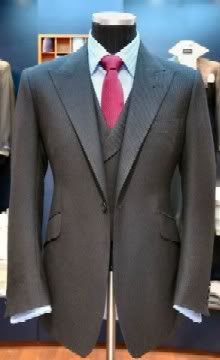Matt Deckard
Man of Action
- Messages
- 10,045
Just so everyone is on the same page when it comes to a few terms.
I was just asked about balance and skirt and thought I'd make a few things clear because some things just aren't on Google.
Skirt refers to the lower half of the jacket hanging around your rear sides and front.
Balance is reference to the angle the suit hangs. Could be tilting forward or tilting back. Sometimes one side hangs lower than the other.
Looking at yourself in a mirror Check out the side view as well to see if the front and back are level), if the jacket is level at the bottom then the jacket is in balance..
I made a reference to balance in a thread regarding Prince Charles... I didn't mean balance in the way I described above. In the case of Charles I was making reference to his suit not quite suiting him since the lapels looked too narrow for him and the shoulders didn't seem to balance out his lower half.
Make sense?
I was just asked about balance and skirt and thought I'd make a few things clear because some things just aren't on Google.
Skirt refers to the lower half of the jacket hanging around your rear sides and front.
Balance is reference to the angle the suit hangs. Could be tilting forward or tilting back. Sometimes one side hangs lower than the other.
Looking at yourself in a mirror Check out the side view as well to see if the front and back are level), if the jacket is level at the bottom then the jacket is in balance..
I made a reference to balance in a thread regarding Prince Charles... I didn't mean balance in the way I described above. In the case of Charles I was making reference to his suit not quite suiting him since the lapels looked too narrow for him and the shoulders didn't seem to balance out his lower half.
Make sense?







